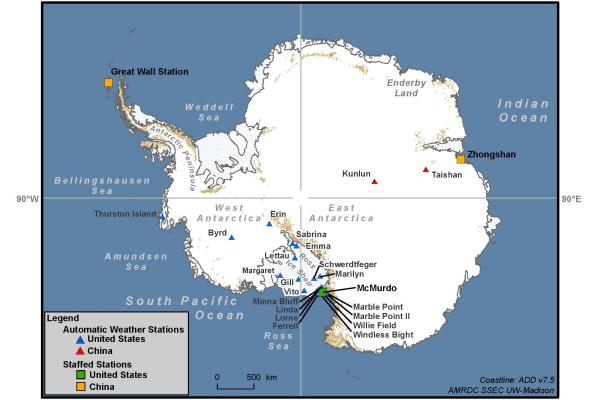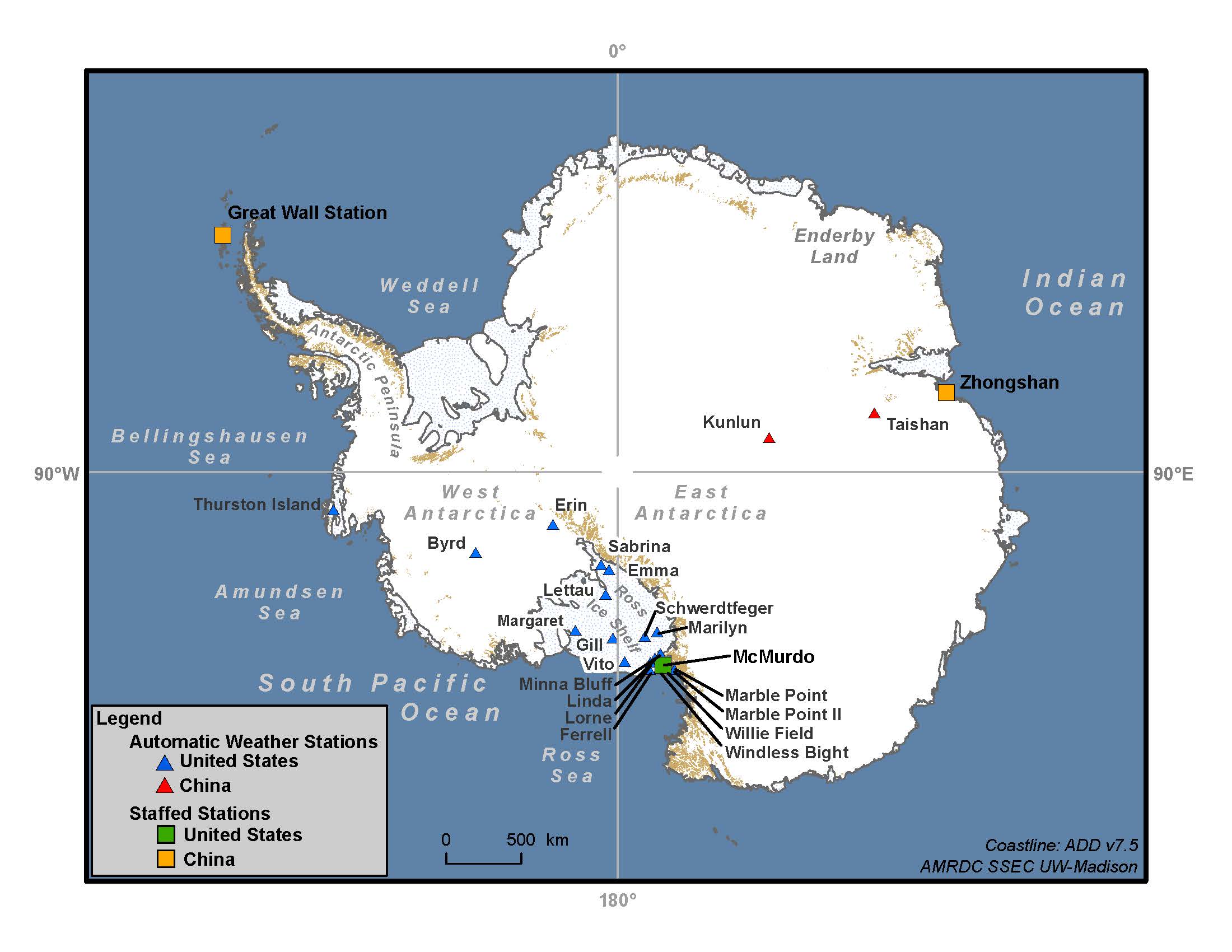Extraordinary Antarctic Chill in Late Winter 2023

In the recent study published in Advances in Atmospheric Sciences, researchers meticulously documented unprecedented cold temperatures across Antarctica that significantly impaced critical operations during July and August 2023.
Led by Anastasia J. Tomanek and David E. Mikolajczyk, the team identified four distinct phases of intense cold that coincided with the WINFLY (winter fly-in) operations. During these phases, temperatures plummeted below −50°C, disrupting flights to McMurdo Station and Phoenix Airfield due to the increased risks of hydraulic failures and fuel gelation.
Additional contributors to the study included Byrd Center's Polar Meteorology Group lead David H. Bromwich, research professor in the Department of Geography's Atmospheric Sciences Program and University Distinguished Scholar, and Ph.D. student Mariana Fontolan Litell.
The researchers gathered data from automatic weather stations and manual observations across a broad geographic area—from East Antarctica toward the Ross Ice Shelf and extending to the West Antarctica and the Antarctic Peninsula. This comprehensive data collection recorded new low-temperature records, illustrating the extreme nature of the cold spell.

Through detailed analysis of geopotential height anomalies at 500-hPa, roughly located at about 5.5 kilometers (18,000 feet) above sea level in the mid-troposphere, the study highlighted strong negative anomalies, in specific periods throughout June-August, correlating with the severe cold events. These atmospheric patterns, including southerly off-continent airflows and calm conditions, were critical in sustaining the low temperatures.
This study sheds light on the atmospheric dynamics that led to the 2023 cold extremes and underscores the urgent need for advanced predictive models to better prepare for such events. The insights gained are crucial for improving operational strategies and safety protocols for Antarctic expeditions, especially during the austral winter season from June to August.
This study linked these temperature anomalies to broader atmospheric conditions, paving the way for future research on global climatic influences such as the El Niño–Southern Oscillation or the Southern Annular Mode.
This research exemplifies the critical role of international cooperation and expert knowledge in understanding and responding to complex meteorological challenges in polar regions.
To access the study and learn more, visit Extreme Antarctic Cold of Late Winter 2023.
